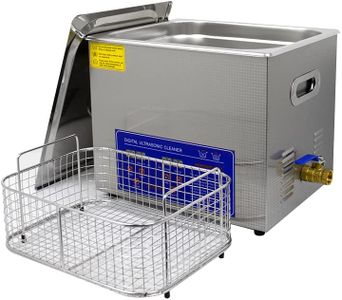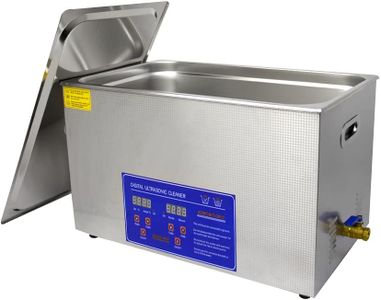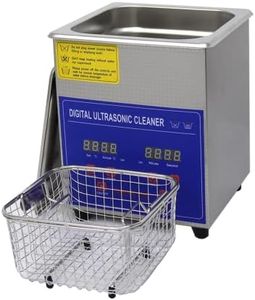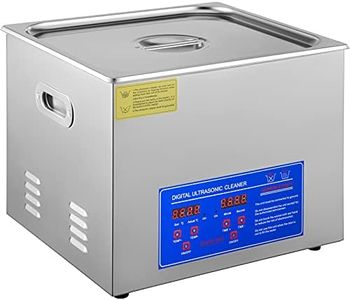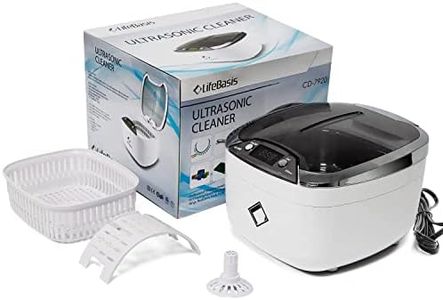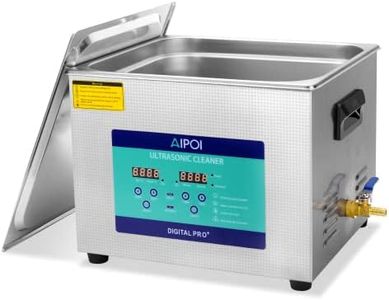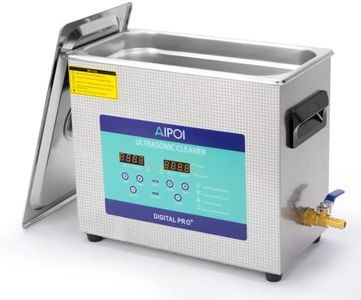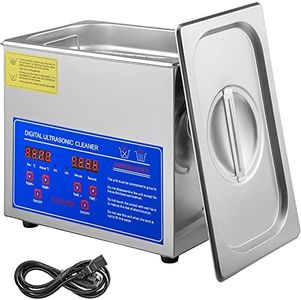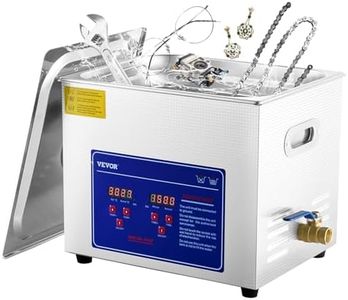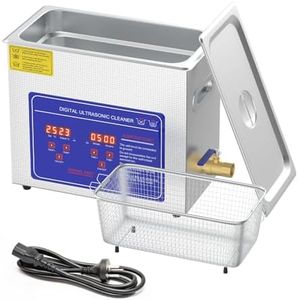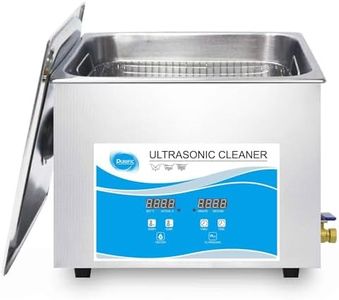We Use CookiesWe use cookies to enhance the security, performance,
functionality and for analytical and promotional activities. By continuing to browse this site you
are agreeing to our privacy policy
10 Best Ultrasonic Carb Cleaners
From leading brands and best sellers available on the web.Buying Guide for the Best Ultrasonic Carb Cleaners
Ultrasonic carb cleaners are devices that use high-frequency sound waves in a cleaning solution to remove dirt, grease, and carbon build-up from carburetors and other small mechanical parts. Choosing the right ultrasonic cleaner is important because it helps ensure effective cleaning without damaging parts, saves time, and can be used for a variety of maintenance tasks. When selecting an ultrasonic carb cleaner, it's important to balance cleaning power, size, and usability to fit your particular needs.Tank CapacityTank capacity refers to how much cleaning solution the ultrasonic cleaner can hold at one time, which determines the size and number of carburetor parts you can clean in one cycle. Smaller tanks (around 1-3 liters) are suitable for cleaning single small carburetors or parts, while mid-size tanks (4-6 liters) allow you to clean multiple parts or larger components. Larger tanks (above 6 liters) are ideal for cleaning several items at once or larger carbs from bigger engines. To choose the right size, consider the size of the parts you typically need to clean and whether you'll want to clean multiple items together.
Ultrasonic Power (Wattage)Ultrasonic power, measured in watts, determines how strong the cleaning action will be. More wattage means stronger cleaning, which can remove stubborn deposits more quickly but may be harsher on delicate parts. Low power (30-60W) is gentler and suitable for smaller, sensitive parts. Medium power (60-120W) offers a balance for most carburetor cleaning tasks. Higher power (above 120W) is best for thoroughly cleaning heavily soiled or larger components. Choose the ultrasonic power based on how dirty your parts usually are and whether you need gentle or intensive cleaning.
Frequency (kHz)The cleaning frequency, measured in kilohertz (kHz), affects how the ultrasonic waves interact with the parts. Lower frequencies (around 28-40 kHz) create larger cleaning bubbles, which are more aggressive and good for removing tough grime from sturdy metal parts. Higher frequencies (above 40 kHz) produce smaller, gentler bubbles that are better for delicate or finely detailed parts. Most carburetor cleaning is done effectively at standard frequencies (around 40 kHz). For carburetors with delicate surfaces or complex shapes, a higher frequency may be beneficial. Choose the frequency based on the fragility and detail level of the items you plan to clean.
Timer and Temperature ControlsTimers let you set how long the cleaning cycle should run, and temperature controls allow you to heat the cleaning solution for better effectiveness. Having adjustable controls is important because different parts and levels of dirt require different cleaning times and temperatures. Basic models may offer preset timers and fixed temperatures, making them easy to use for simple jobs. More advanced units let you adjust both settings to match specific cleaning needs. If you want more control over the cleaning process for different types of carburetors or contamination levels, look for an ultrasonic cleaner with adjustable timer and temperature settings.
Build Quality and MaterialThe build quality and material, especially of the tank, impact the cleaner's durability and longevity. Stainless steel tanks resist corrosion and are easy to clean, ensuring a long service life even with frequent use. Plastic or lower-quality metal tanks may be cheaper but can wear out faster or be harder to keep clean. For frequent or demanding use, always choose an ultrasonic cleaner with a stainless steel tank. If you'll only use it occasionally, less robust construction may be sufficient.
Ease of Use and Safety FeaturesUltrasonic cleaners with simple controls, clear indicators, and safety features such as automatic shut-off and overheat protection are easier and safer to use, especially for beginners. If you're new to ultrasonic cleaning, look for models with straightforward operation and features that prevent accidents or equipment damage. For more experienced users or in workshop settings, extra features such as digital displays and memory functions can add convenience.
